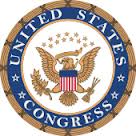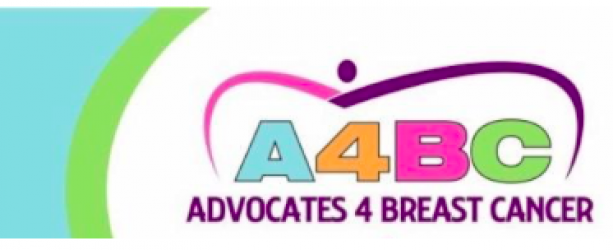Yesterday I put an article in my Breast Cancer Newspaper about a federal committee of leading breast cancer experts that released a report about reducing our exposures to chemicals and radiation in our environment. Today I received an email from Jeanne Rizzo, R.N.
President and CEO of the Breast Cancer Fund stating that she is serves as a co-chair with the federal committee.
 The report, “Breast Cancer and the Environment: Prioritizing Prevention,” concludes that “preventing environmental exposures is the most promising path to decrease incidence of the disease, and calls for a national breast cancer prevention strategy.”
The report, “Breast Cancer and the Environment: Prioritizing Prevention,” concludes that “preventing environmental exposures is the most promising path to decrease incidence of the disease, and calls for a national breast cancer prevention strategy.”
The report’s first stop is the desk of U.S. Secretary of Health and Human Services Kathleen Sebelius, who must create an action plan to implement the report. This action plan can lay the groundwork for a national prevention strategy that will require commitment and hard work from the Obama administration and Congress.”
Write to Secretary Sebelius today to urge her to immediately create an action plan.
Let her know that it’s time for our nation to embrace the notion that we can and must prevent breast cancer.
(To learn more about the report and download the full report go to: http://www.niehs.nih.gov/about/boards/ibcercc/.)
Together, we have built a mighty movement, and because of you, we’re on the edge of a sea change. To write to Secretary Sebelius, just follow this link from the Breast Cancer Fund. All you have to do is put in your information and the letter is written for you, unless you want to add or change something.




Just wondering if there are any studies about the difference between people who live in polluted cities and people who live in the country away from the pollution, stress, etc. and cancer rates. Do you know?
LikeLike
Offhand, I don’t know, but your question made me thing whether the pollution in a city is as toxic as fertilizer in a farm setting? Luckily this study is carefully constructed and according to the New York Times, “The report, “Breast Cancer and the Environment — Prioritizing Prevention,” published on Tuesday, focuses on environmental factors, which it defines broadly to include behaviors, like alcohol intake and exercise; exposures to chemicals like pesticides, industrial pollutants, consumer products and drugs; radiation; and social and socioeconomic factors.”
LikeLike
Reblogged this on Health Communications and Health Advocacy and commented:
Leading Breast Cancer Experts report on prevention of cancer through reducing exposures to chemicals and radiation in our environment. We can help to move this information forward into an action plan within the Obama administration by following a link described in Susan’s blog post. As Margaret Mead so eloquently stated, “Never doubt that a small group of thoughtful, committed, citizens can change the world. Indeed, it is the only thing that ever has.”
LikeLike
Just wanted to let you know that I have re-blogged your post. People need a way to take action and this is one way. Thanks for posting about this!
LikeLike
Thank you for re-blogging this post. What I loved about the report is that according to the San Francisco Chronicle, “Its findings validated the long-held contention of women’s advocacy groups that strong circumstantial evidence pointed to a link between chemical exposure and breast cancer. That evidence would include the fact that the vast majority of women who are diagnosed with breast cancer have no family history of the disease as well as the geographic patterns of incidence that suggest environmental factors at work.” I am encouraged that patient advocates are continuing to have a strong voice which affects action taken to help prevent breast cancer.
LikeLike
Reblogged this on anotheronewiththecancer.
LikeLike
Thank you for re-blogging this post. What was so great about the committee that made this report is that it consisted a group of scientists, government officials and patient advocates established by Congress to examine the research. Again I am so encouraged that patient advocates were included with scientists and government officials and they are a vital part of this committee which can help prevent breast cancer.
LikeLike
Great information Susan! I can’t reblog (for some reason), but will tweet and FB about it!
LikeLike
I am sorry you were unable to re-blog this Vicki as this technical stuff sometimes will not cooperate. Meanwhile I am glad you are sharing the message because of it’s importance!
LikeLike
Thank you so much Marie for including me in the weekly roundup. I am honored to be included with so many other great bloggers.
LikeLike
I just sent off the letter. I wonder if my Stage IV cancer is a result of the environment. I don’t have the BRCA genes and I have no family history. Keep on with this great information.
LikeLike
I think that it’s great they are looking for things in the environment that cause breast cancer. I know we still don’t know what caused our breast cancers even if we were genetically disposed. They are also looking at new genes besides BRCA1 and BRCA2. Sometimes I think there are more questions than answers. Most important, for Stage IV I especially want to see more research for MBC no matter what the cause. It would be great if knowing the cause brought about a way to reverse MBC. I know I am dreaming….but it would be so great. Thanks Jan. XoXoXo- Susan
LikeLike
Thanks, Susan. This is great. I will be writing to Secretary Sebelius.
LikeLike
Thanks Nancy. I am looking forward to their further findings and what they will do with it.
LikeLike
Reblogged this on Woman in the Hat and commented:
Thanks to Susan Zager for providing this info and making it easy for us to make a difference … at least to try.
LikeLike
Eileen, thank you so much for re-blogging and for saying such a nice compliment as well as your helping us make a difference. XoXoXo- Susan
LikeLike
Unfortunately, it reblogged to my old wordpress site. What I’ll do is post it on my facebook page where I know people pay attention. Thanks again, Susan, You’re appreciated!
LikeLike
Sometimes these wordpress programs can be very frustrating. The important thing is that we are getting the word out! Thanks again Eileen!
LikeLike
Thanks Susan. Great article. I hadn’t heard of this call to action. I just signed the petition! You picked a great topic to write on. While percentage of folks dying of bc is down some, the number of folks getting it is HUGELY UP – as with so many cancers. Now what has changed? I don’t think these past coupla decades we’re coming into this world, brand new, with worse genes. Hmmm, guess environment and food – that’s all I can think of that’s different.
LikeLike
Thank you Rachel for signing. Actually the number of people dying hasn’t changed much in 20 years. In 1991 118 women in the US did a day from MBC and now 109 women in the US die a day. It’s so hard to know the reasons for all of this breast cancer and the deaths, but if the environment is adding to the epidemic I am glad we are doing something about it. Thanks again for your support.
LikeLike
Yes, very sadly once it’s metastatic women almost always die from it. Research has not come far in finding a cure. But the percentage of deaths overall (when counting caught early are down) – according to NCI, 33.6 percent decrease in mortality from 2005 to 2009. But after reading your blog I went to see if I could find how many more people are actually getting breast cancer. Estimated 234,580 new cases in 2013. And supposedly there were a total of 229,060 cases from 2005-2009. What a jump! Environment big topic I think!
LikeLike